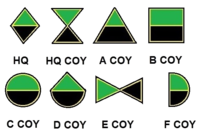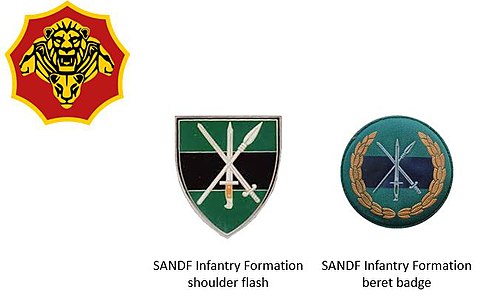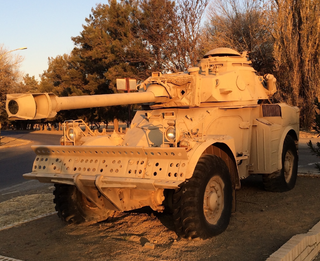
The Eland is an air portable light armoured car based on the Panhard AML. Designed and built for long-range reconnaissance, it mounts either a 60mm (2.4 in) breech-loading mortar or a Denel 90mm (3.5 in) gun on a very compact chassis. Although lightly armoured, the vehicle's permanent 4X4 drive makes it faster over flat terrain than many tanks.

The Ratel is a South African infantry fighting vehicle. It was the first wheeled infantry fighting vehicle to enter service worldwide and was built on a modified MAN truck chassis. The Ratel was designed in response to a South African Army specification for a light armoured vehicle suited to the demands of rapid offensives, providing maximum firepower and strategic mobility to mechanised infantry units intended to operate across the vast distances of Southern Africa. Primarily envisaged in SADF doctrine as a vehicle that could deliver mechanised infantry and supporting fire to tanks in conventional warfare, it was also anticipated that the Ratel could form the centrepiece for semi-independent battlegroups where logistics or politics precluded the use of tanks. The Ratel was a simple, economical design which helped reduce the significant logistical commitment necessary to keep heavier combat vehicles operational in undeveloped regions. It was generally regarded as an influential concept which incorporated a number of novel features, such as a mine-protected hull, an extended operating range of 1,000 kilometres, and a 20mm autocannon fitted with what was then a unique twin-linked ammunition feed, allowing turret gunners to rapidly swap between ammunition types during combat.
Operation Reindeer, which began on 4 May 1978, was South Africa's second major military operation in Angola, carried out under the Apartheid regime, the first being Operation Savannah.
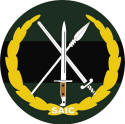
The South African Army Infantry Formation supervises all infantry within the South African Army.
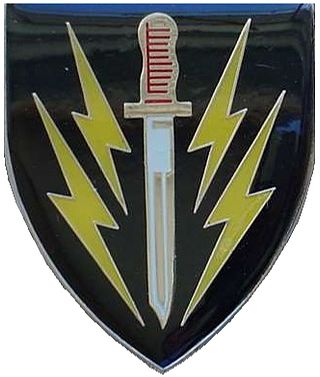
61 Mechanised Battalion Group was a unit of the South African Infantry Corps; although it was classed as mechanized infantry, it was a combined arms force consisting of infantry, armour and artillery.
Operation Protea was a military operation during the South African Border War and Angolan Civil War in which South African Defence Forces (SADF) destroyed a number of South West Africa People's Organisation (SWAPO) bases in Angola. During the operation, which took place from 23 August to 4 September 1981, up to 5,000 SADF soldiers occupied Cunene province, Angola.
Operation Askari was a military operation during 1983 in Angola by the South African Defence Force (SADF) during the South African Border War.
Operation Moduler was a military operation by the South African Defence Force (SADF) during the South African Border War. It formed part of what has come to be called the Battle of Cuito Cuanavale. The Angolan objective was to advance south-east to attack the UNITA at Mavinga. The SADF objective was to protect UNITA by stopping that advance. The advance was halted with heavy Angolan casualties. The South African forces and its UNITA allies then began offensive operations against the Angolan forces, who had retreated back to a defensive line east of the Cuito River with the objective of destroying them once and for all.
Operation Prone was a proposed military operation by the South African Defence Force (SADF) and South West African Territorial Force (SWATF) during the South African Border War and Angolan Civil War between May and September 1988. With the advance of the 50th Cuban Division towards Calueque and the South-West Africa border, the SADF formed the 10 SA Division to counter this threat. The plan for Operation Prone had two phases. Operation Linger was to be a counterinsurgency phase and Operation Pact a conventional phase.

1 Special Service Battalion is an armoured regiment of the South African Army and only one of two such in its regular force. The Regiment is based at Tempe near Bloemfontein.

The ZT3 Ingwe (Leopard) is a modern South African multi-role laser beam riding anti-tank guided missile (ATGM) manufactured by Denel Dynamics.
Operation Sceptic was the largest anti-South West Africa People's Organization (SWAPO) sweep during the South African Border War up to that point. The operation was also known as Smokeshell though this was the codename for the People's Liberation Army of Namibia (PLAN) base which was the main focus of the attack. This operation followed Operation Safraan and preceded Operation Klipklop.

Lohatla is a training area of the South African National Defence Force. It is located in the Northern Cape province of South Africa and is home to the SA Army Combat Training Centre, which is part of the South African Army Training Formation.

1 South African Infantry Battalion is a mechanized infantry unit of the South African Army.
Operation Mebos occurred during July and August 1982 with the objective of attacking SWAPO's People's Liberation Army of Namibia (PLAN) bases and new regional headquarters in Southern Angola by the South African Defence Force (SADF) based in South West Africa/Namibia.
Operation Excite/Hilti was a set of military operations by the South African Defence Force (SADF) during the Angolan Civil War and South African Border War.

4 South African Infantry Battalion is a motorised infantry unit of the South African Army.

7 South African Infantry Battalion is a motorised infantry unit of the South African Army.
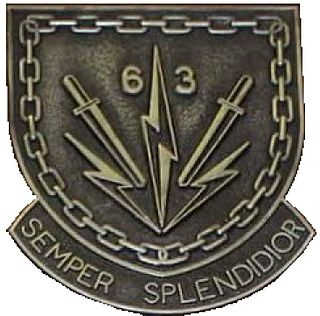
63 Mechanised Battalion Group was a unit of the South African Infantry Corps; although it was classed as mechanized infantry, it was a combined arms force consisting of infantry, armour and artillery. Together with 61 Mechanised Battalion Group and 62 Mechanised Battalion Group, these units made up 60 Brigade encompassing battlegroup principles.

South West Africa Command was a command of the South African Army.

